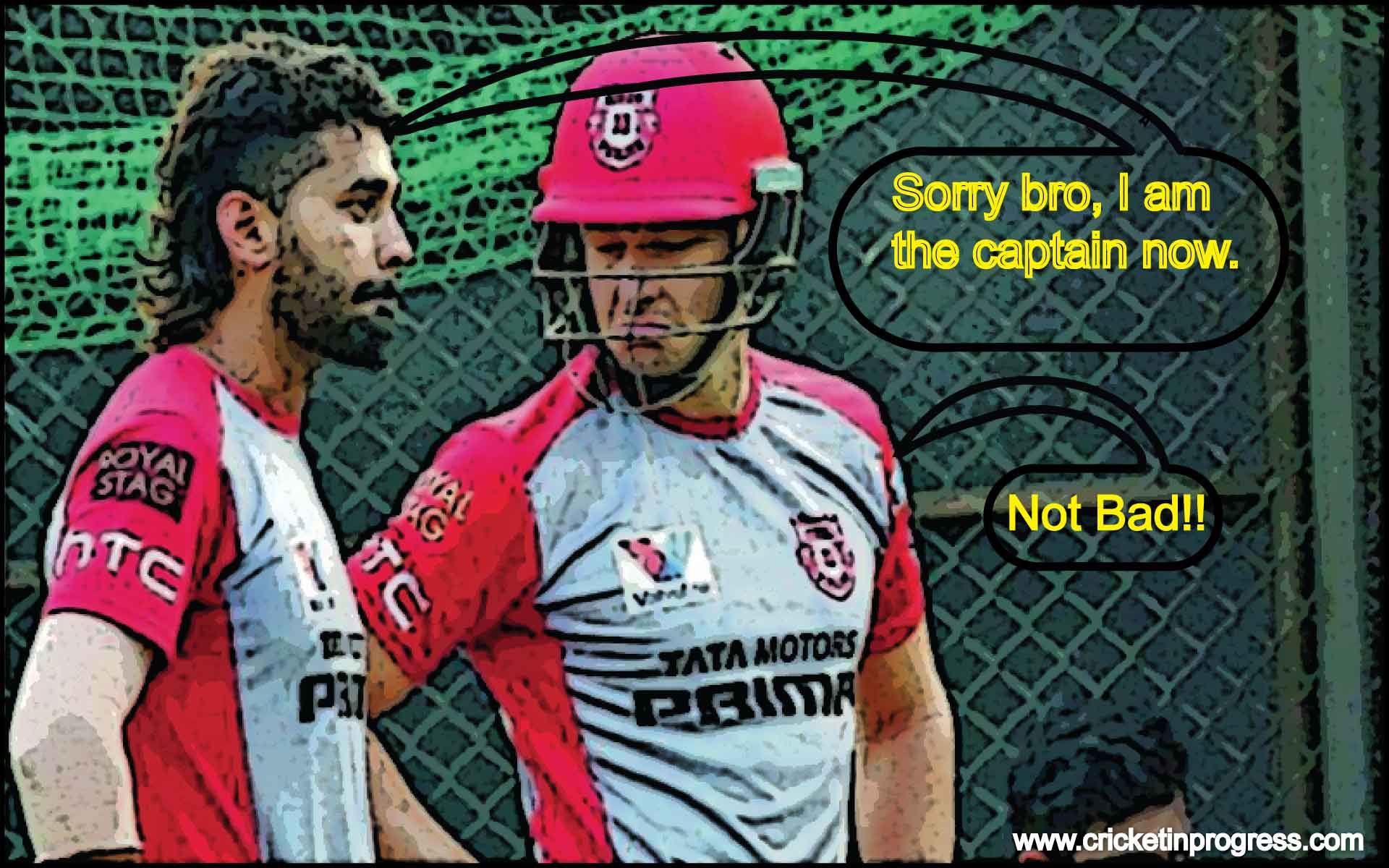Changing captains midway through a tournament.
Is it a co-incidence that ICC tournaments have never seen a change in captain midway through a tournament for reasons other than injury? I don’t think so. But, like so many other things, IPL has brought up a new trend in captaincy. As many as 9 changes of captains has happened in the IPL in its 9 years history. Some changes worked out for the better while some changes turned out to be flops too. What are the pros and cons? Is it healthy for the team morale? Under what circumstances should captains be changed? What happens to the morale of the captain who is replaced? Let us answer these questions and many more. PS: I would have written this article 3 days ago, but, my health, like RCB’s bowling and RPS’s luck, is not in anybody’s hands.
The first ever change happened in the inaugural edition of IPL when VVS Laxman paved way for Adam Gilchrist. Gilchrist took over the reins and although they finished last in that season, Deccan Chargers bounced back the next year and went on to win the IPL. This was one of the changes that worked out.
In 2009, when Kevin Pietersen returned for National duty, Anil Kumble was named the captain. This change was probably a “from rags to riches” tale since RCB, from last on the points table, went on to become runners-up. 2010 was a quite year as franchisees opted to stick with captains named before the start of the tournament. Ditto in 2011. Coincidentally, these were the 2 years when Dhoni-led Super Kings won the IPL.
2012 was a busy year – there were 9 teams participating. There ended up being 12 captains. Sachin Tendulkar gave up the captaincy to Harbhajan Singh, who couldn’t repeat his captaincy performance from the Champions League T20.
Daniel Vettori stepped down to give the captaincy to Virat Kohli, the eventual captain of RCB and INDIA, who would end up doing wonders. Daniel Vettori was so selfless , that he dropped himself from the playing XI altogether so that some other foreigner can occupy that spot.

In what would be the last year Deccan Chargers ever played IPL, Kumar Sangakkara gave up the captaincy to Cameron White, only because Sanga did not want to occupy a foreigner’s spot and not score runs. Another selfless act. None of these 3 changes worked out in the short term.
In 2013, Ricky Ponting was named as captain of MI. He was expected to open the batting with Sachin Tendulkar. And, so they did. They failed miserably. Qualification of MI into the playoffs was a big concern. Captaincy ruins were handed over to Rohit Sharma. Probably the best turnaround of all time, Rohit Sharma led MI to the IPL title itself. Viewers went on to see that this was just the first of many Masterclass moves that Ricky Ponting would make in the years to come.
2014 saw just 1 change. Shikhar Dhawan, to focus on his batting gave the mantle of captaincy to Darren Sammy. Though Sammy didn’t do any wonders, it gave Dhawan a lot of freedom to focus on his batting and deliver.
By 2015, everyone knew that Steven Smith was the next big thing in World Cricket, though his price tag of 4.5 crore didn’t justify that. When Shane Watson injured himself, Steve Smith led the Royals and won 4 out of 4 games. However, when Watto came back, RR lost. Thus, it was no surprise that Steve Smith was named the captain of the side for the rest of the tournament. It turned out to be a crucial decision; Watson scored a match-winning century against Kolkata in what was a virtual quarter-final match.
The latest change was in 2016. Following dismal performances by David Miller with the bat and the captaincy, the Punjab team management was forced to name Murali Vijay as the captain. Such was the contrast of IPL 2016 that teams like Pune had as many as 3 national captains and Punjab had none. Captaincy did wonders to Vijay’s batting and has enabled him to score tough runs.
Coming to the questions I initially asked – What are the pros and cons? Is it healthy for the team morale? Under what circumstances should captains be changed? What happens to the morale of the captain replaced? A new captain, more often than not, brings fresh energy to the party. Since we are talking about captains getting replaced midway, it is 100% true that the team itself is down and dusted and low on confidence. In such a scenario, a new captain is a boon. His captaincy skills and management skills are different(maybe better) than the now former captain. He brings a new brand of cricket to the fore and marches his troops accordingly. Sometimes, that turns out to be the push that was needed the whole time, thus working in the team’s favour. Having said that, not all changes help in the reversal of the team’s fortunes, as is evident by the stats – only 4 out of 9 captains went on to captain the respective team for more than 1 season(assuming Murali Vijay doesn’t continue as the captain). Note: Nothing can be said about Steve Smith because the RR franchisee has been suspended for 2 years and he may or may not be with RR when the franchisee returns from suspension.
Sometimes, the team morale is already so low that it can’t go any below. In such a case, a new captain only helps in bringing the team morale up. Talking about the captain who was dropped or who dropped himself, his confidence is definitely on the lower side. But, having given up the extra burden of captaincy, he can now focus on the area he is meant to excel in. The best example is Shikhar Dhawan for SRH. After giving up the captaincy, he focused on his batting and started scoring runs. That was what the team needed of him. In short, if the exclusion of the captain is mutual, the environment within the team remains healthy, and the relationship between the old and new captain is not hampered.
Changing captains midway through a season is a risky affair. The decision could backfire. Thus, identifying the potential captain, noticing which player is worthy of it and doesn’t loose his form when given the extra responsibility of leading the team becomes vital. Again, the result of each decision is a Schrödinger’s cat. If the decision fails, it turns out to be a bad one and vice versa. The outcome of the change is never known until it is employed.













